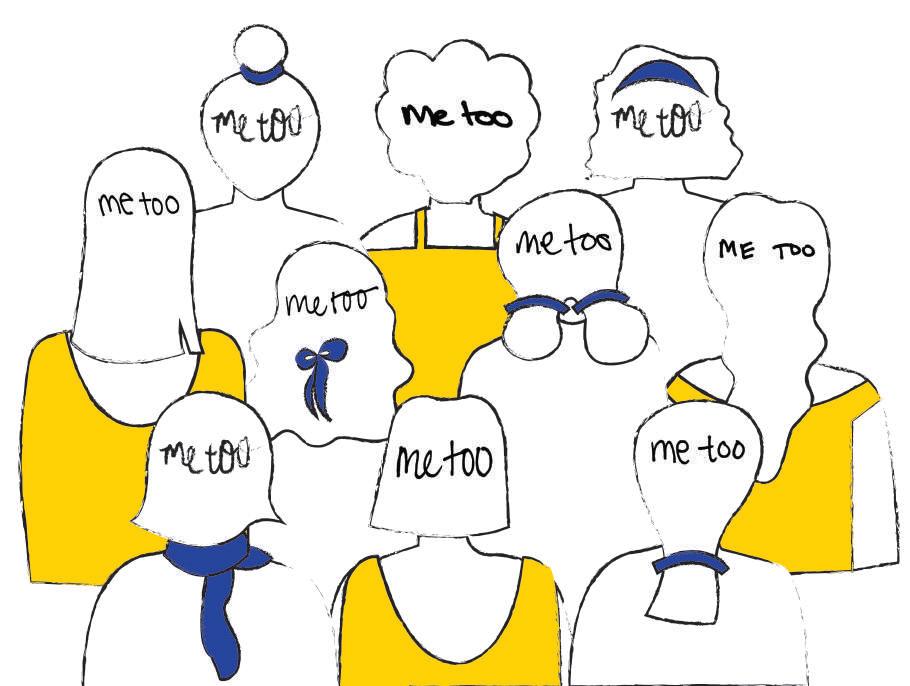
7 minute read
Right to Pleasure: Peggy Orenstein and Destigmatizing Female Sexuality
The Right
In season 2 of the Netflix original, Grace and Frankie, the two female title characters devise a plan to produce and market a sex toy targeted towards older women. Although the program has been commended for tackling some rather difficult material regarding sexualtiy, its approach to female masturbation is hardly revolutionary. Female masturbation is one of the only remaining taboo topics when it comes to sex, so much so that even in relatively progressive media, the most acceptable way to reference it is through sex toys. One of the earliest examples of this in the media was on an episode of Sex and the City called “The Rabbit.” The women begin using a vibarator in their sex lives, a representation that, aside from being obviously very heteronormative, suggests that discussing female pleasure is only acceptable if there is a man involved, even if only symbolically. SHEI spoke to The New York Times bestselling author, Peggy Orenstein, about her book Girls & Sex, and taboos around female masturbation. When considering the stigma surrounding female masturbation, it’s important to start at the beginning. In Orenstein’s book Girls & Sex, she points to the flaws in the sexual education system in the United States. Starting from a young age, there are vast differences in how women and men are taught to think about sex, in all capacities, even their own bodies. Orenstein explains that when raising girls, parents often find it difficult to actually name their children’s genitals, while boys are made aware of theirs from a very young age. This causes women to grow up confused about their own anatomy, finding it to be an almost nameless entity. Even when anatomical charts are shown to children in sexual education classes, oftentimes much is left unnamed on the women’s body, leading to an internalized suppression of female sexuality. As children mature and sexual education expands, again boys and girls are taught ideas with many complex differences. Most prominently when discussing puberty, children are taught that as boys mature, alongside their physical changes comes an increase in sex drive and testosterone. With girls, however, puberty is often only defined by physical changes in their menstrual cycles, breast development and hair growth. “Boys have erections and wet dreams, and girls have periods and unwanted pregnancies. Oh boy! That’s fun, huh?” Orenstein quipped. Although the inclusion of male sex drive in discussion of puberty may seem like a relatively trivial detail, the exclusion of increased female sex drive actually becomes another internalized misunderstanding of innate female qualities. Girls grow up believing an interest in sex to be a part of boy’s nature, but not their own. Orenstein explained that an easy way to address this issue is to openly acknowledge female sexuality to girls at a young age. “I sat in on a puberty education class where the teacher just named everything and just said, ‘This is the clitoris; it’s for making good feelings,’” Orenstein explained. “That’s what you need to know when you’re ten years old,” she went on. Excluding the clitoris is one of the most common offensives when teaching sexual education to young women, eliminating any discussion of female pleasure. As Orenstein explained, in American Girls’ Care and Keeping of You Edition 2, a woman’s external genitalia diagram is provided with everything labeled but the clitoris. “What are they so afraid of ?” Orenstein questioned. Furthermore, girls learn shame about their bodies, particularly about their genitals. “They’re taught that they smell bad, or they taste bad, or they have to be embarrassed about them.” Orenstein explained, adding, “There’s a lot of anti-vagina talk.” As early as middle school, it is common knowledge that boys masturbate and look at porn. They are sexual beings, afterall. However, this conversation is generally nonexistent for girls, even in liberal and progressive environments. Due to the lack of discussion, particularly in the media, female masturbation is not normalized at all. “One thing I really noticed is how often male masturbation is talked about and how casually [in] all kinds of contexts.” Orenstein stated. The same is not true for women, and this inequality leads to all kinds of disparities in sexual relationships. My own informal research reinforced Orenstein’s conclusions. I found that it is incredibly rare for women to discuss masturbation with their female friends before college. Those who did felt an immense amount
to Pleasure

Peggy Orenstein and Destigmatizing Female Sexuality
of shame, as if they were doing something disgusting or unnatural. Moreover, those who were able to talk about it only did so in vague terms. In one case, a woman used an emoji to reference masturbation over text, because even saying the word “masturbation” was “too uncomfortable.” Men have a never-ending supply of descriptives for masturbation, but women must resort to emojis — further evidence that a man’s pleasure takes precedence. After interviewing over seventy women across the country about their sexual experiences, Orenstein found that the two most common descriptives women used for for “good sex” were 1) it did not hurt and 2) their male partner climaxed. Although no one is directly taught that sexual satisfaction is limited to men, through sexual education and conversation, or lack thereof, indirectly women are taught that sex is about male pleasure and not their own. This acceptance of one-sided sexual pleasure inadvertently creates a stigma around female pleasure. Orenstein emphasized the importance of women understanding their own bodies, how they work and their pleasures, while being able to assert wants, needs, and limits. Quoting University of Michigan professor of psychology Sarah McClelland, Orenstein discussed the function of “intimate justice” in relationships. “With intimate justice we should ask who is entitled to engage in sexual behavior, who’s entitled to enjoy it, who’s the primary beneficiary, and how each partner defines ‘good enough,’” Orenstein said. Orenstein found that, “Young women did feel entitled to that first thing, they felt entitled to engage, but they didn’t necessarily feel entitled to enjoy, they didn’t necessarily feel that they were the primary beneficiary of the experiences they had, and they defined ‘good enough’ at a radically lower bar, in heterosexual relationships, than the men they were with.” American culture plays a large role in how young women think about sexual relationships. “American culture simultaneously politicizes and commercializes sex, and we don’t have any real discussion about actual healthy sexual interaction,” Orenstein said. One of the largest factors in this commercialization is the multibillion dollar industry we know as online porn. “The trouble there is it doesn’t portray a very realistic impression about how the female body works,” Orenstein explained. The portrayals of women in porn put a lot of pressure on young women, leading them to believe they should be looking and acting like women depicted in porn. Orenstein explained that these representations lead girls to believe that pornography is somehow “superior or the more advanced form of sex, instead of being a completely stylized, fake version of sex.” She went on to explain, “it reinforces that whole aspect that your sexuality is a performance for somebody else, rather than something that’s there for you.” The recent focus of the controversy surrounding comedian Aziz Ansari highlights this issue. An anonymous woman published an account online describing an encounter with Ansari during which he persistently pushed for sex despite her obvious disinclination. This scenario was disturbingly familiar. Indeed, many came to Ansari’s defense, claiming the woman was unclear with her signals, or that she should have simply left. Ansari was just following his nature; he’s a man, so of course he wants sex. Glaringly absent from the conversation was any discussion of her desire, her needs, her pleasure. The normality of this is where the real issue lies. As with so many things, it all comes down to an imbalance of power. Hopefully, female empowerment movements such as Time’s Up and #MeToo will force us to better define sexual misconduct, and therefore level the professional playing field. But as women move closer to equal power in the boardroom, they must demand equal power in the bedroom as well. Once we as a society acknowledge that a woman’s pleasure is as valuable as man’s, the stigma of female masturbation will be lifted. By Sophie ReVeal Layout by Paige Wilson









